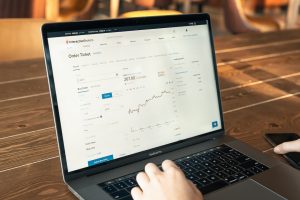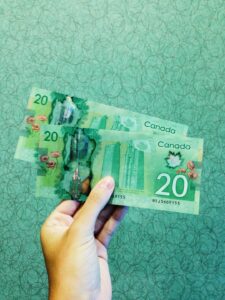Forex trading, also known as foreign exchange trading, is the process of buying and selling currencies in the foreign exchange market. It is the largest and most liquid financial market in the world, with an average daily trading volume of around $6.6 trillion. Forex trading can be a profitable venture, but it requires a good understanding of the market and its terminologies. In this article, we will explore some of the most commonly used terminologies in forex trading.
1. Pips: A pip, short for “percentage in point,” is the smallest unit of measurement in forex trading. It represents the change in value between two currencies. Most currency pairs are quoted to the fourth decimal place, so a change of 0.0001 is equal to one pip. However, some currency pairs, such as the Japanese yen, are quoted to the second decimal place, so a change of 0.01 is equal to one pip.
2. Spread: The spread is the difference between the bid price and the ask price of a currency pair. The bid price is the price at which you can sell the base currency, while the ask price is the price at which you can buy the base currency. The spread is usually measured in pips, and it represents the cost of the trade. Brokers make money by widening the spread, so it is important to choose a broker with competitive spreads.
3. Leverage: Leverage allows traders to control larger positions with a smaller amount of capital. It is expressed as a ratio, such as 1:100 or 1:500. For example, with a leverage of 1:100, you can control a position worth $100,000 with only $1,000 of capital. While leverage can amplify profits, it can also amplify losses, so it should be used with caution.
4. Margin: Margin is the amount of money required to open a position. It is a percentage of the total value of the position. For example, if the margin requirement is 2%, and you want to open a position worth $100,000, you would need to have $2,000 of margin in your account. If the trade goes against you and your losses exceed your available margin, you may receive a margin call and be required to deposit additional funds to maintain your position.
5. Stop Loss: A stop loss is an order placed to automatically close a trade at a certain price level in order to limit losses. It is a risk management tool that helps traders control their risk. For example, if you enter a long position on a currency pair at 1.2000 and set a stop loss at 1.1900, your trade will be automatically closed if the price reaches 1.1900, limiting your potential loss to 100 pips.
6. Take Profit: A take profit is an order placed to automatically close a trade at a certain price level in order to lock in profits. It allows traders to set a target price at which they want to exit a trade and take their profits. For example, if you enter a long position on a currency pair at 1.2000 and set a take profit at 1.2100, your trade will be automatically closed if the price reaches 1.2100, locking in a profit of 100 pips.
7. Long and Short: In forex trading, going long means buying a currency pair with the expectation that its value will rise. Going short means selling a currency pair with the expectation that its value will fall. For example, if you go long on EUR/USD, you are buying euros and selling US dollars. If you go short on GBP/USD, you are selling British pounds and buying US dollars.
8. Liquidity: Liquidity refers to the ease with which a currency can be bought or sold without causing a significant change in its price. The forex market is highly liquid, with a large number of buyers and sellers constantly trading currencies. This high level of liquidity ensures that traders can enter and exit positions quickly and at a desired price.
9. Fundamental Analysis: Fundamental analysis is the study of economic indicators, such as interest rates, GDP growth, inflation, and employment data, to determine the intrinsic value of a currency. It helps traders understand the underlying factors that drive currency movements and make informed trading decisions.
10. Technical Analysis: Technical analysis involves the study of historical price and volume data to identify patterns and trends that can be used to predict future price movements. Traders use various technical indicators, such as moving averages, MACD, and RSI, to analyze charts and generate trading signals.
These are just a few of the most commonly used terminologies in forex trading. Understanding these terms is essential for anyone looking to venture into the world of forex trading. It is important to continue learning and staying updated on the latest developments in the forex market to improve your trading skills and increase your chances of success.





